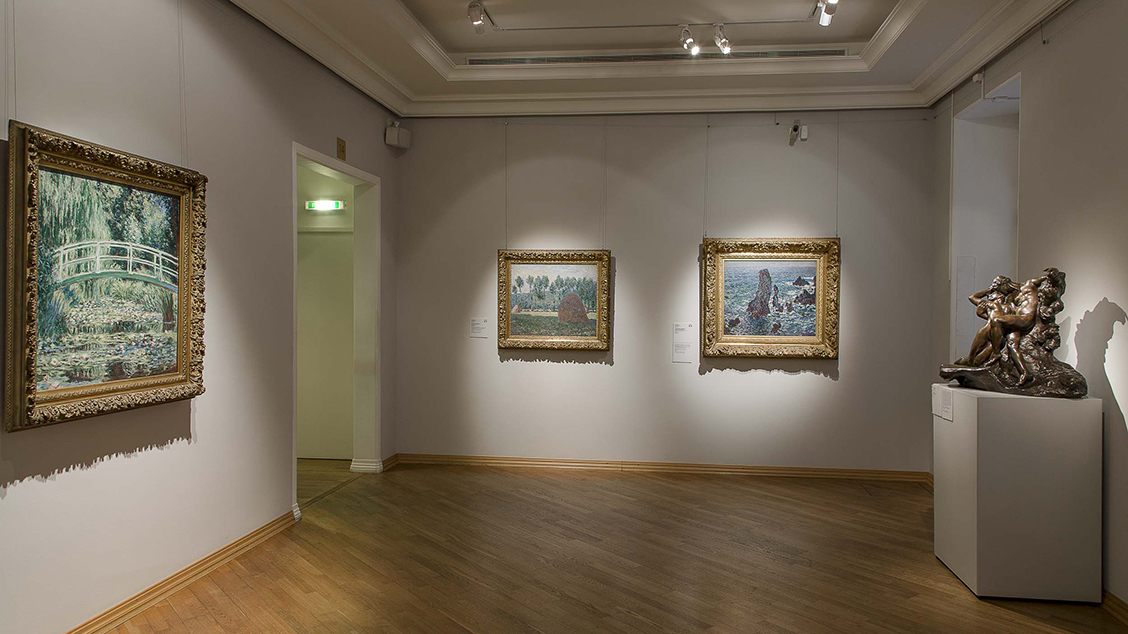The history of Impressionism is inseparable from Claude Monet's creative biography. It is no accident that a work by him was used mockingly to give the new rend its name. At the First Exhibition of Impressionists, which was held in Nadar's photo studio in 1874, the artist displayed a work entitled Impression. Sunrise. The critic L. Leroi saw the picture and made use of the title in the heading for his article "Exhibition of Impressionists". As we know, the Impressionists not only accepted the nickname, but actually made it the official title of the group of which Claude Monet became the acknowledged leader.
While still in Le Havre where he grew up, Monet began to paint plein-air landscapes on the advice of the well-known painter Eugene Boudin. From his observations the artist concluded that there are no constant local tones in nature and that the colour of every object changes depending on the light. Working in the open air became essential for his art. "I want to capture the moment: the atmosphere and the light diffused in it," the artist confessed. This desire to convey an immediate impression of a motif demanded a radical revision of the basic principles of painting. His interest in the problems of light and colour enabled the artist to renounce subjects completely, while his poetic perception of the world helped him divine pictorial beauty in even the most ordinary motif in nature. So now the very essence of painting, the vibration of the individual moving strokes, became the most important theme in Monet's work. On his canvases objects lose their density, breaking up into an infinite number of light reflexes, which create a single medium of light and atmosphere.
The place of the large easel painting was taken by the etude or study, which acquired the status of a finished work, but still retained all the freshness of a fleeting visual impression. Seeking to record different light nuances and complex colour relationships, Monet began to create series of pictures depicting the same motif. In 1883 the artist bought the house in Giverny where his most famous cycles were painted - Haystacks and Water Lilies.
Monet painted more than twenty pictures of Rouen Cathedral. The whimsical architecture of French Gothic lost its independent significance for the artist and become a kind of screen to project the endless play of light and colour.
In his later works such as White Water Lilies (1899) and Seagulls. The River Thames in London. Houses of Parliament (1904), there is a growing tendency to flatten space, which eventually resulted in the easel painting turning into the decorative panel. The fleeting impression gives way to lengthy meditation, which brought Monet's work close to the creations of the French Symbolists.

